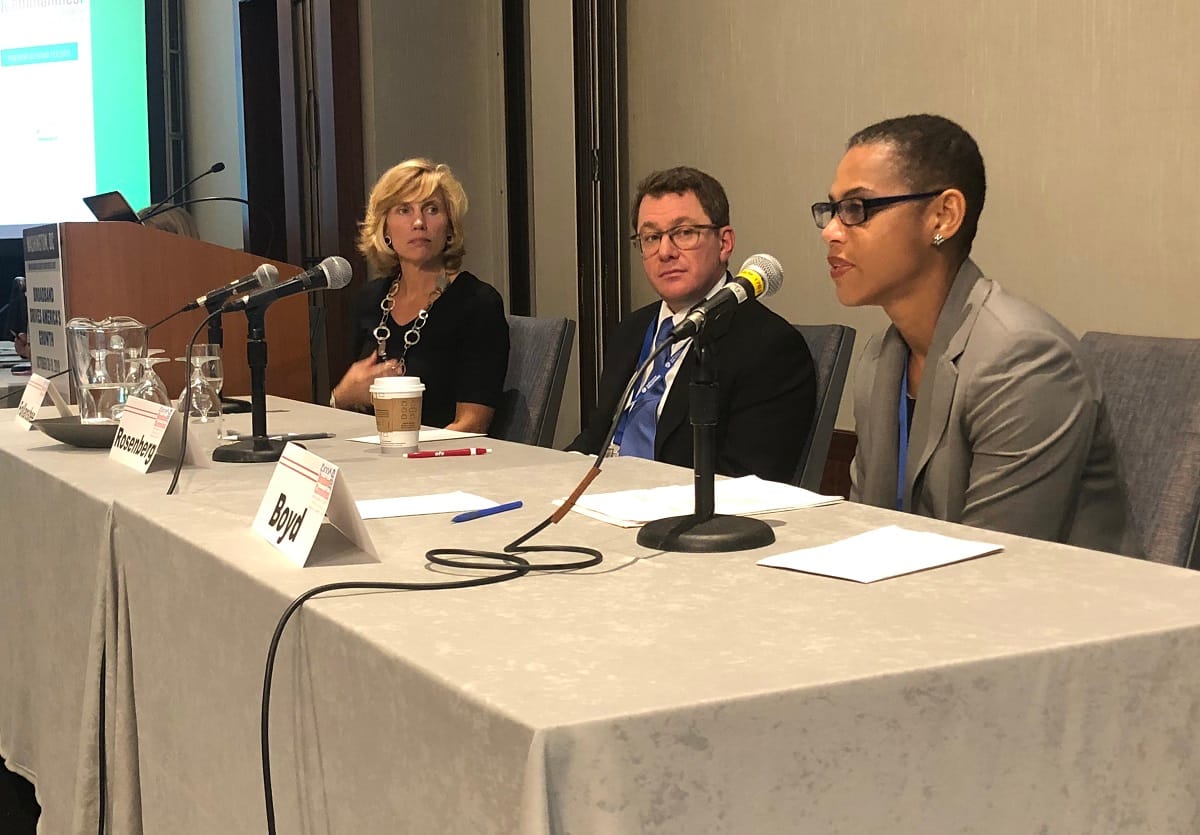Broadband Data From Providers Needs to be Checked With Data From Users, Say Panelists at Mapping Event
ALEXANDRIA, Virginia, October 30, 2019 – The more one delves into the details of broadband mapping, the more complicated it becomes to understand issues of network topology, geographic information systems and consumer “crowdsourcing.” That was the conclusion of a panel discussing the topic at a Broa

ALEXANDRIA, Virginia, October 30, 2019 – The more one delves into the details of broadband mapping, the more complicated it becomes to understand issues of network topology, geographic information systems and consumer “crowdsourcing.”
That was the conclusion of a panel discussing the topic at a Broadband Communities economic development conference here. Representatives of broadband providers (US Telecom) and broadband users (Microsoft) participated, together with three separate government entities.
Lynn Follansbee, vice president of US Telecom, discussed the evolution of the trade association’s interest in broadband mapping — and their “broadband fabric” project. But her perspective, on behalf of providers, was counterposed by Microsoft’s increasing engagement on the subject.
“We are not a broadband carrier, but as big data has emerged, that is an area where we have a fair amount of expertise,” said Paula Boyd, senior director of regulatory affairs for software giant, which is increasingly also a cloud company. She said Microsoft approached broadband data with a desire be a check against provider-supplied data.
Boyd said that Microsoft’s checks — supplemented by machine learning — have shown just how flawed FCC data can be. Comparing Microsoft user data in 20 markets (supplemented by the web site Broadband Now), Microsoft found broadband usage at between zero and eight percent when the FCC found such usage at between 90 and 100 percent.
Rounding out the panel were officials from the Federal Communications Commission, the Commerce Department and a state broadband entity.
The government officials discussed what each of them have been doing to improve the substance behind and analysis of broadband maps, a subject that has been increasingly discussed over the past seven months.
[See Broadband Breakfast articles on broadband data and mapping. See an explanatory article on the subject be this author published in Broadband Communities, including a discussion of the Broadband SPARC, for Broadband “Speeds, Prices, Availability, Reliability and Competition.”]
Perhaps the biggest task at hand falls to the FCC. Steve Rosenberg, chief data and analytics officer for the agency, described the steps that the agency is taking to complete the Digital Opportunity Data Collection, a new effort to completely revamp the way the FCC collects broadband data from providers.
Rosenberg articulated the enormity of the task before the FCC. He said that the agency was in the midst of making crucial decisions about the DODC, including ways that the agency plans to implement “crowdsourcing” data without allowing for new inaccuracies.
“We want people to tell us where the data is incorrect,” said Rosenberg. At the same time, he said the agency “has certainly had experiences where people submitted data in bulk that was not what they said it was.”
Rosenberg also highlighted intrinsic complexities that arise from the FCC’s efforts to incorporate data about actual broadband speeds.
Even as the FCC irons out the new data collection system that will ultimately replace the legacy Form 477, the Commerce Department’s National Telecommunications and Information Agency is also in the midst of its own broadband mapping revamp. Dubbed the National Broadband Availability Map and released last month, the still-private map was built in collaboration with eight states, said Tim Moyer, program manager at NTIA.
Moyer called the NTIA’s tool “more than a map,” but a way for the federal government to continue interacting with a variety of state broadband entities. The eight states that participated in the $7.5 million NTIA map are California, Maine, Massachusetts, Minnesota, North Carolina, Utah, Tennessee and West Virginia.
Speaking for state broadband entities was Jean Plymale, broadband project manager at Virginia’s Center for Innovative Technology. Plymale, who said she welcomed the increased activity on broadband mapping. But she was also critical of inaccuracies in data submitted by providers.
She said local knowledge was crucial to supplement errors in broadband data, and particularly praised the existence of open source tools, like Robert Balance’s Internet as Infrastructure, which attempt to reconcile different broadband data sets.
Follansbee, of US Telecom, also addressed some aspect of the trade group’s evolution toward a more detailed approach toward broadband data.
Although providers have supplied information at a Census block level since the unveiling of the National Broadband Map in 2011, the group’s providers began to recognize that members of Congress, the public and the FCC were demanding more granular data — perhaps even more granular than address-level data.
“Rather than fighting it, we decided to figure out a solution for this,” she said. “Instead of kicking the can down the road,” US Telecom decided to produce a pilot map of all the “broadband serviceable locations” and to which any provider could reference as they provide data to the FCC.
The pilot program mapped out the broadband availability of certain providers in Virginia and Missouri. Documentation about the pilot undertaken with CostQuest has has been submitted to the FCC as part of its broadband mapping proceeding.










Member discussion